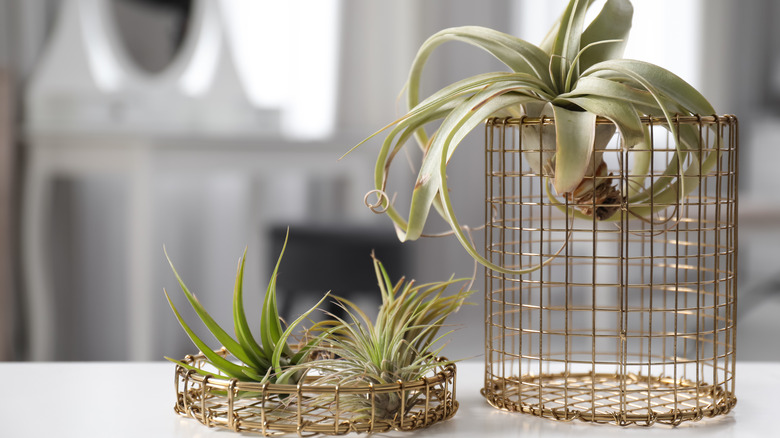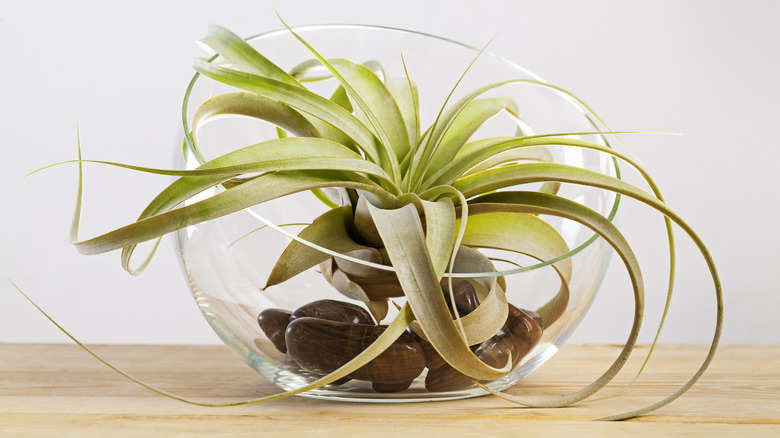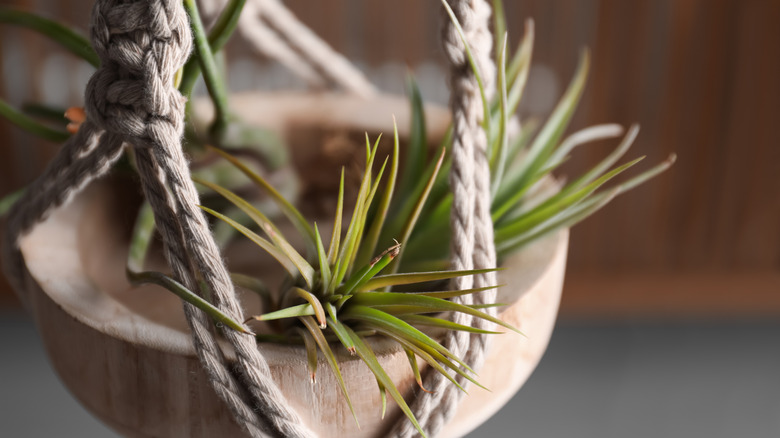What To Do When Your Air Plant Turns Brown
Air plants are unique from other houseplants — they're part of the epiphytes family, which means they don't need soil to survive. However, they can turn brown for many different reasons. Where and how the discoloration appears will help you determine why your plant is suffering. Depending on if their brown leaves feel limp or crispy, you can decide if you need to give them more or less water or sunlight.
Air plants absorb all the nutrients and moisture they need to live through the air. This makes it even easier to see any problems occurring with their health since there's no potting mix to cover features like roots. They're a simple houseplant to take care of once you get the hang of it, but since they don't have soil, you can't water them the way you would your other plants. Air plants need to be soaked in a bowl of water at least once a week for 20 minutes, then they can return to the sunny spot they call home. Although, if you don't find the perfect place for your air plant and give them the proper amount of moisture, they will show you how upset they are through their foliage.
Are they under or overwatered?
If you've noticed your air plants turning brown at the base, you may be overwatering them. Leaves will begin to call off, and the bottom of the plant may even turn black. What's happening is that your air plant is rotting from all the excess moisture. The first thing you need to do is immediately stop watering it. Then use sanitized shears to trim off the discolored leaves since there is no way of saving them. By removing them, you're redirecting your plant's energy from the foliage that's too far gone so the rest of it has a chance to recover. Lastly, move your air plant to a sunny location to encourage it to dry out. After two weeks, you should be able to resume regular watering. Just be sure that you shake off any excess moisture after soaking them.
Air plants can also turn brown when they need more water. To differentiate between the two problems, feel your plant's leaves. If they're crispy, you're underwatering them. You can increase soaks to two to three times a week. It may also be a humidity problem, depending on the time of year. The hot air from a heater in the winter lacks moisture and will dry out your plants. To fix this, you can add a humidifier to the room, mist your plants multiple times a week, or build a pebble tray under their container.
Do they need less sun?
Another reason why your air plants may be turning brown is if they get too much sunlight. When it hits them directly for an extended period of time, their leaves will burn. Once this happens, their tips can turn brown, or spots will appear over the top of their foliage. Air plants need a few hours of bright light a day to survive, but it needs to be filtered. To remedy the problem, first, use sanitized shears to remove the brown leaves, then you can find them a better location in your home.
Placing yours in a south-facing window is a big mistake during the summer. This is when the sun is the strongest, so they will burn quickly. Instead, put them in an east or west-facing window for bright, indirect light. You can filter the sun even more with a sheer curtain or by moving the air plant 1 to 3 feet away from the window. Then if they need more sun during the winter, you can move them back to their original location.


